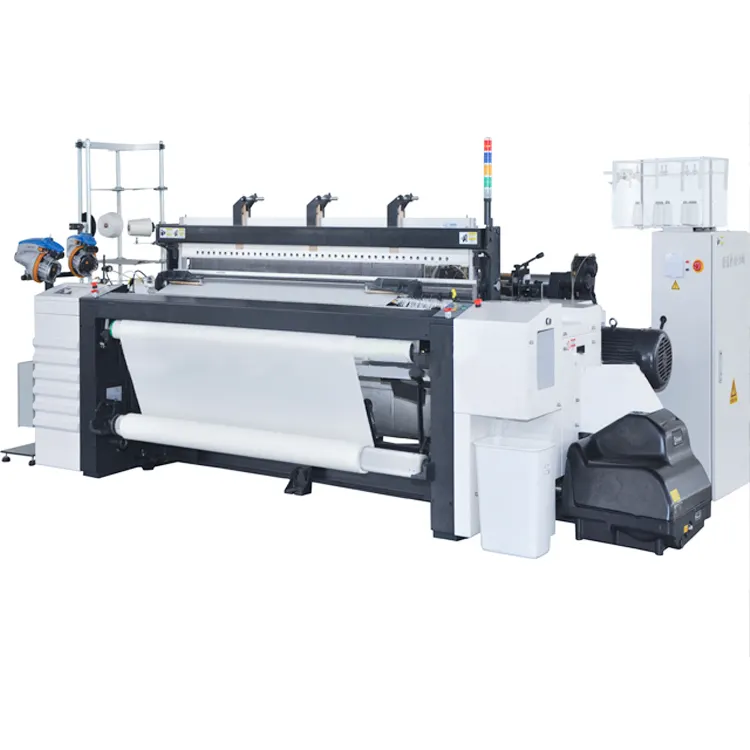The rapier loom is a type of shuttleless weaving machine that uses a rapier to carry the weft yarn through the shed. It is known for its high efficiency, speed, and versatility. It can weave a variety of fabrics, from lightweight materials like silk and chiffon to heavy materials like denim and canvas. The rapier loom is also capable of weaving intricate patterns, making it a popular choice for producing decorative and high-quality fabrics.
However, the rapier loom is not without its drawbacks. It can be more expensive to operate and maintain than other types of weaving machines, and it may require more skilled operators to run effectively. Additionally, the high speed of the rapier loom can lead to increased wear and tear on machine parts, which can lead to more frequent maintenance and repair.
Common faults of rapier loom:
- Poor fabric quality: this may be due to uneven fabric tension or uneven fabric density, so it is necessary to check whether the adjustment of fabric tension and density is correct.
- Warp or weft breakage: this may be due to uneven tension of warp or weft, or wear of machine parts, so it is necessary to check the wear of machine parts and whether the tension of warp or weft is adjusted correctly.
- Loud noise from the loom: this may be caused by wear or looseness of machine parts, so it is necessary to check whether the machine parts need to be replaced or tightened.
- Yarn breakage in the loom: this may be caused by wear or looseness of machine parts, or uneven fabric tension, so it is necessary to check the wear of machine parts and whether the adjustment of fabric tension is correct.
- Warp or weft stoppage in the loom: this may be caused by wear of machine parts or uneven tension, so it is necessary to check the wear of machine parts and whether the tension of warp or weft is adjusted correctly.
To maintain the good working condition of the rapier loom, regular maintenance is required, including:
- Regularly check whether machine parts need to be replaced or tightened, such as hook needles, shuttles, and blades.
- Regularly lubricate machine parts to maintain the good running condition of the machine.
- Regularly clean machine parts to avoid dust, fibers and other impurities affecting machine operation.
- Regularly check the quality of the fabric, adjust fabric tension and density to ensure fabric quality stability.
- Regularly check the tension of warp or weft to avoid breakage or stoppage.
- Regular maintenance of the machine to avoid machine failure or damage.
Post time: Apr-11-2023






